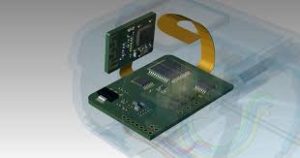What factors influence the cost of flex rigid pcb manufacturer?
- by admin
- Posted on May 20, 2024
influence the cost of flex rigid pcb manufacturer
The cost of manufacturing flex rigid PCBs, like any other electronic component, is influenced by a multitude of factors that range from design complexity to material selection and production volume. Understanding these factors is crucial for both manufacturers and customers to optimize costs while ensuring the desired quality and functionality of the PCBs.
One of the primary factors influencing the cost of flex rigid PCB manufacturing is the complexity of the design. PCBs with intricate layouts, multiple layers, fine pitch components, and tight tolerances require advanced manufacturing processes and specialized equipment, which inherently increase production costs. Complex designs may also entail additional steps such as impedance matching, controlled impedance routing, and blind/buried vias, adding to the overall manufacturing expenses.
The choice of materials used in flex rigid pcb manufacturer significantly impacts the cost. High-quality substrate materials such as polyimide for flex layers and FR-4 for rigid layers offer superior performance and reliability but come at a higher cost compared to standard materials. Similarly, the selection of copper thickness, surface finishes, and solder mask types can influence the overall material cost of the PCB.

What factors influence the cost of flex rigid pcb manufacturer?
Production volume plays a crucial role in determining the cost-effectiveness of flex rigid PCB manufacturing. While larger production runs benefit from economies of scale, reducing per-unit manufacturing costs, smaller batches may incur higher costs due to setup fees, tooling expenses, and lower production efficiencies. Manufacturers often offer pricing incentives for larger orders to encourage bulk purchases and long-term partnerships.
The complexity and accuracy of manufacturing processes required for flex rigid PCBs contribute to their cost. Specialized techniques such as laser drilling, sequential lamination, and controlled impedance routing necessitate advanced equipment, skilled labor, and meticulous quality control measures, all of which add to the manufacturing overhead. Additionally, any deviations or errors during production may incur rework costs, further impacting the overall manufacturing expenses.
Quality assurance measures are essential for ensuring the reliability and functionality of flex rigid PCBs but can also influence the cost. Comprehensive testing, inspection, and compliance verification processes, including electrical testing, thermal profiling, and environmental testing, incur additional expenses but are necessary to maintain high product standards and meet customer specifications. Investing in quality assurance upfront can mitigate the risk of defects, failures, and costly returns down the line.
Geographical factors such as labor costs, regulatory requirements, and supply chain logistics also play a role in determining the cost of flex rigid PCB manufacturing. Regions with lower labor costs may offer competitive pricing for PCB production, while locations with stringent environmental regulations or import/export restrictions may incur additional compliance costs. Furthermore, supply chain disruptions, fluctuating material prices, and geopolitical factors can impact overall manufacturing costs unpredictably.
Customer-specific requirements and customization requests can influence the cost of flex rigid PCB manufacturing. Tailored designs, special finishes, unique specifications, and expedited turnaround times may incur premium charges or additional engineering fees to accommodate customization requests. Clear communication and collaboration between customers and manufacturers are essential to balance cost considerations with the desired level of customization and performance.
In conclusion, the cost of flex rigid PCB manufacturing is influenced by a combination of factors ranging from design complexity and material selection to production volume, manufacturing processes, quality assurance measures, geographical considerations, and customer-specific requirements. By understanding these factors and effectively managing cost drivers, manufacturers and customers can collaborate to achieve cost-effective solutions without compromising on quality or functionality.
influence the cost of flex rigid pcb manufacturer The cost of manufacturing flex rigid PCBs, like any other electronic component, is influenced by a multitude of factors that range from design complexity to material selection and production volume. Understanding these factors is crucial for both manufacturers and customers to optimize costs while ensuring the desired…
